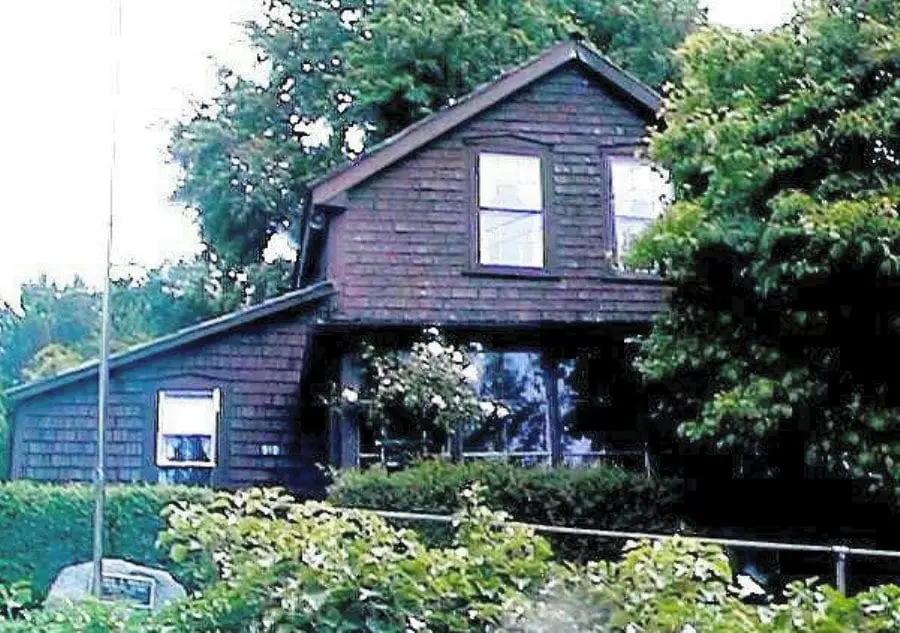
Fearing raids from the British Columbia First Nations people, early Bellingham settlers would crowd together into the stockade house on Peabody hill at night. Company D of the Ninth Infantry was dispatched to offer security and protection. They were led by Captain George E. Pickett, a graduate of The United States Military Academy at West Point in New York and a veteran of the Mexican War. Fort Bellingham, where the stockade was erected, was three miles west of Whatcom Creek. Soon after his arrival Captain Pickett began building his house on the bluff above Henry Roeder’s lumber mill using planks from the mill. Pickett’s house has the distinction of being the oldest building in Bellingham.
Pickett’s house (1856) was a simple two-story building composed of undressed planks. The main section of the house measured only 15 feet wide and 25 feet deep. The first floor was composed of two rooms and the second floor, reached by ladder, had two bedrooms. A lean-to on the west side of the house contained the kitchen and dining room. A fireplace made of stick and mud heated the house. The first room in the house became Pickett’s study, where he conducted much of his official business.
During his stay, Pickett married a First Nations woman named Morning Mist. In 1857, she gave birth to a son, James Tilton Pickett, but sadly passed away from birthing complications only days after his birth causing him to be sent away to live with friends in Mason County. Since Captain Pickett’s duties often took him away from Bellingham, his house was left vacant most of the time. Pickett left Bellingham in 1861, returning to Virginia to be a successful Confederate General in the Civil War.

The Pickett house has changed ownership many times. Hattie Strothers, who lived there from 1889 until her death in 1939, deeded the house and property to the Washington State Historical Society in 1936. After her death the Pickett House became a historical monument and was later placed on the National Register of Historic Places.
Although numerous changes have been made to the Pickett house, it remains the oldest wooden building on its own foundation in Washington State. Most of the improvements have made the house more livable, including the rear addition of a new kitchen. The lean-to was converted into a dining room, the front study is now a living room, and a narrow stairway has replaced the ladder to the second floor. Other modifications are the glassed-in front porch and shingled exterior. The Pickett House still serves as an excellent example of Bellingham’s earliest style. To further preserve the structure, the Pickett house was designated as a museum in 1941, and in 1956, it became home to the Daughters of Pioneers. The Pickett house still serves both of these activities today.
